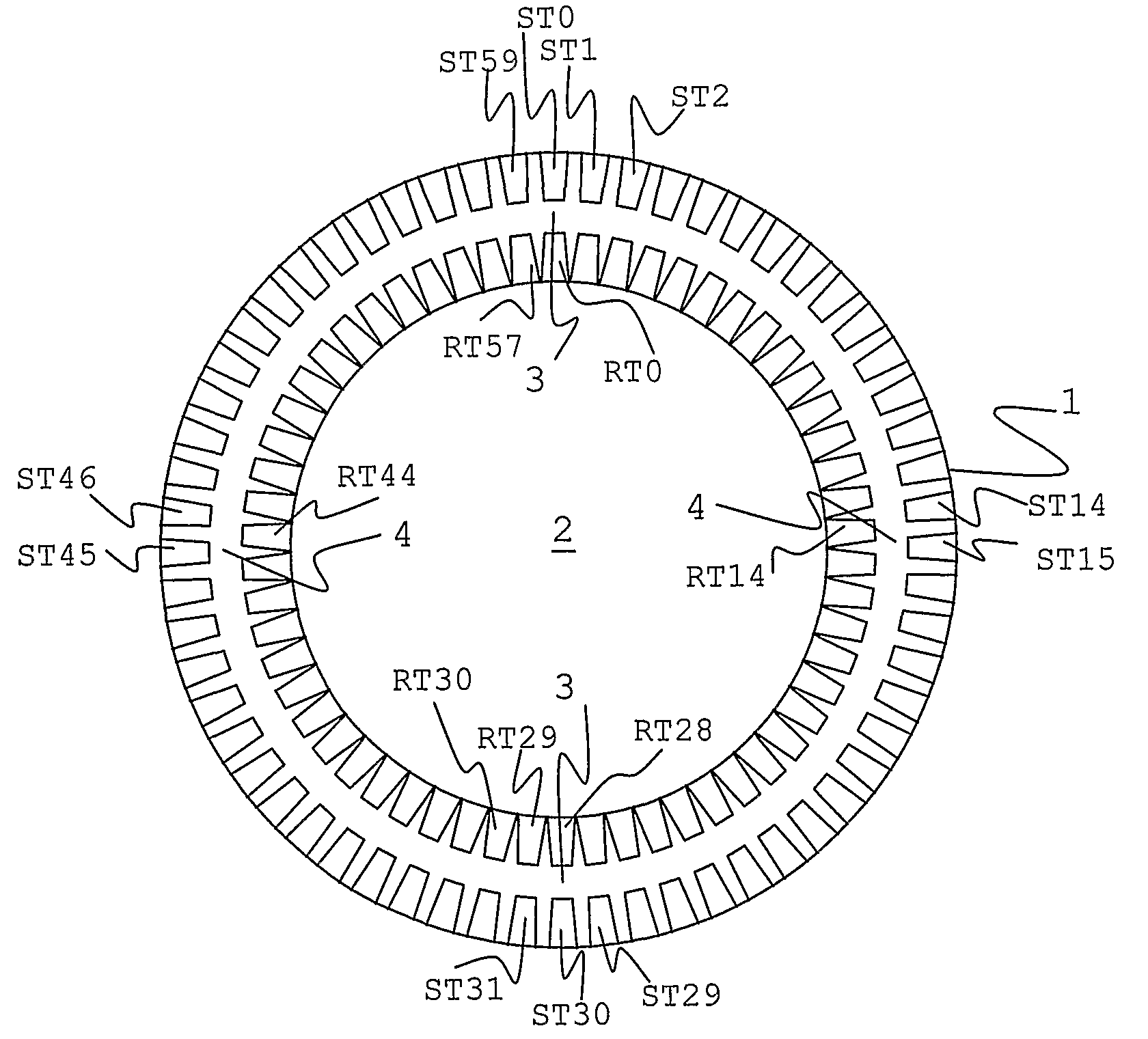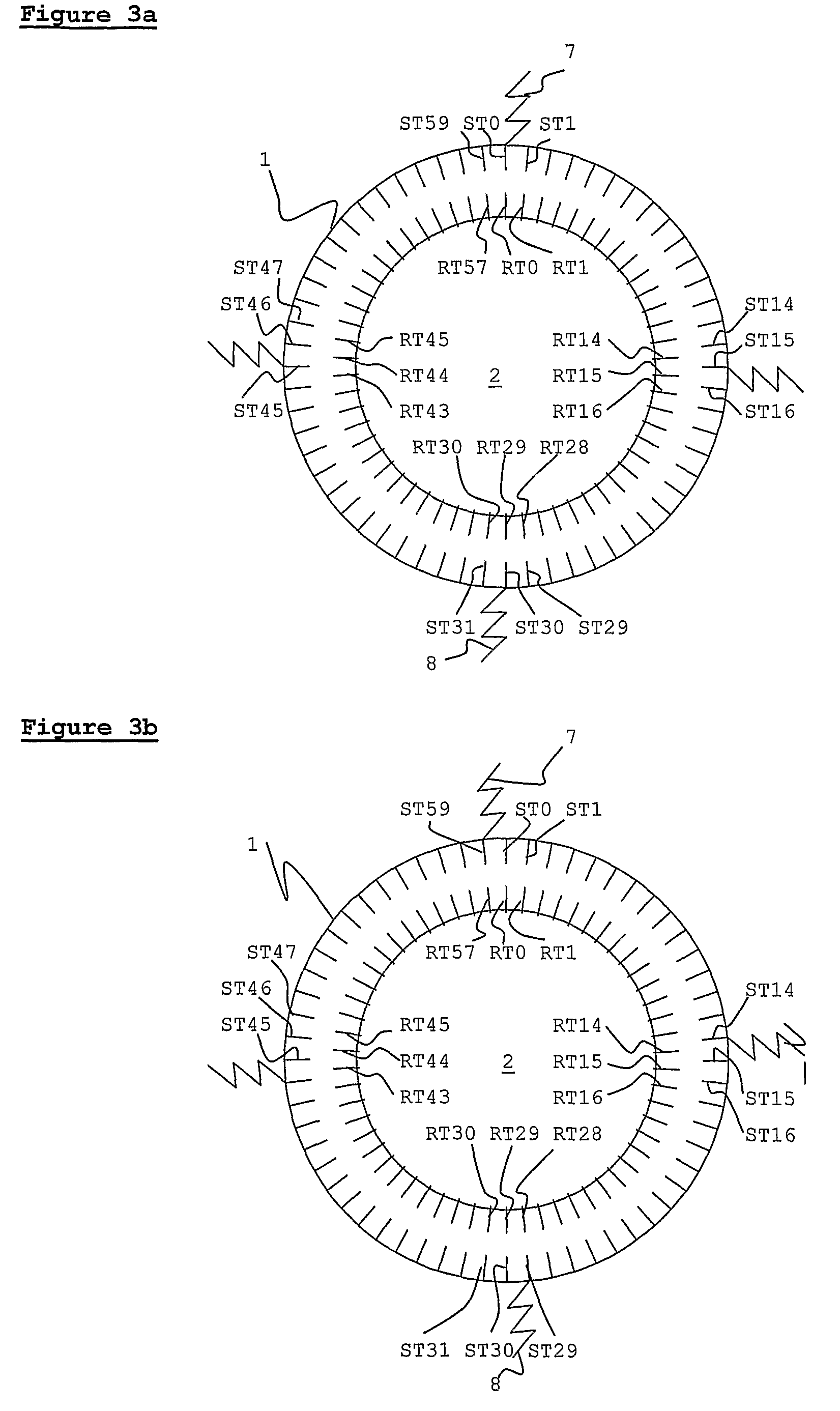Induction and switched reluctance motor
a technology of switching reluctance and motor, which is applied in the direction of motor/generator/converter stopper, dynamo-electric converter control, synchronous motor, etc., to achieve the effect of simplifying logistics and reducing operating costs
- Summary
- Abstract
- Description
- Claims
- Application Information
AI Technical Summary
Benefits of technology
Problems solved by technology
Method used
Image
Examples
Embodiment Construction
[0055]The present invention combines the benefits of a high phase order induction operation and reluctance-based operation into a single machine.
[0056]One embodiment of the present invention is shown in FIG. 2. Stator 1 and rotor 2 each have a high but different number of teeth. The size, dimensions, and spacing of the teeth are intended for purposes of illustration, and are not intended to replicate reality. As may be seen on the diagram Rotor 2 has 58 teeth RT0-RT57, and stator 1 has 60 teeth, ST0-ST59. Only some of the teeth are labeled, for clarity. Both rotor 2 and stator 1 have windings that are standard for induction machines—these are not shown on the diagram, for clarity. There are 60 slots between stator teeth, each containing a different winding phase. The back sides of each winding are wrapped around the outside of the stator, in a toroidal fashion, as described above. Software suitable for both operations, such as, but not limited to, PWM control is used to provide elec...
PUM
 Login to View More
Login to View More Abstract
Description
Claims
Application Information
 Login to View More
Login to View More - R&D
- Intellectual Property
- Life Sciences
- Materials
- Tech Scout
- Unparalleled Data Quality
- Higher Quality Content
- 60% Fewer Hallucinations
Browse by: Latest US Patents, China's latest patents, Technical Efficacy Thesaurus, Application Domain, Technology Topic, Popular Technical Reports.
© 2025 PatSnap. All rights reserved.Legal|Privacy policy|Modern Slavery Act Transparency Statement|Sitemap|About US| Contact US: help@patsnap.com



